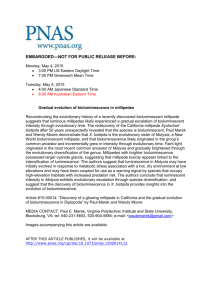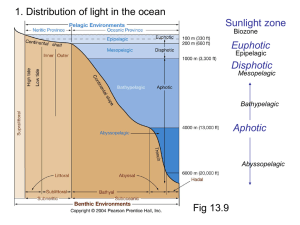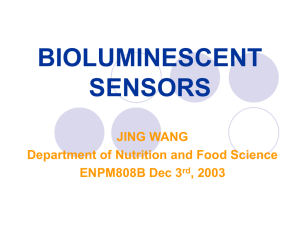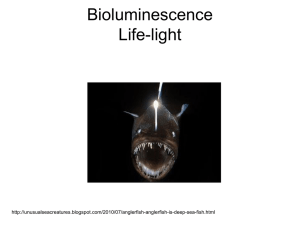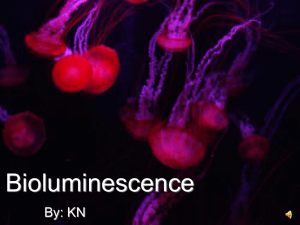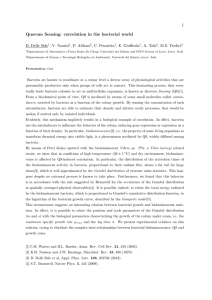trait biological
advertisement
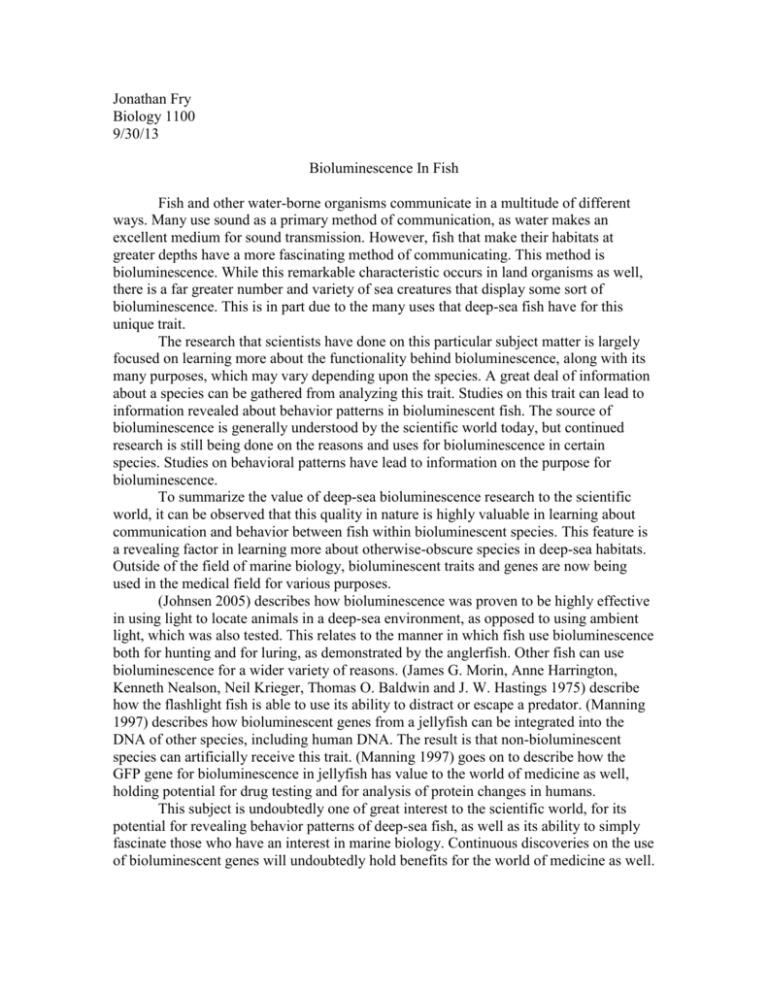
Jonathan Fry Biology 1100 9/30/13 Bioluminescence In Fish Fish and other water-borne organisms communicate in a multitude of different ways. Many use sound as a primary method of communication, as water makes an excellent medium for sound transmission. However, fish that make their habitats at greater depths have a more fascinating method of communicating. This method is bioluminescence. While this remarkable characteristic occurs in land organisms as well, there is a far greater number and variety of sea creatures that display some sort of bioluminescence. This is in part due to the many uses that deep-sea fish have for this unique trait. The research that scientists have done on this particular subject matter is largely focused on learning more about the functionality behind bioluminescence, along with its many purposes, which may vary depending upon the species. A great deal of information about a species can be gathered from analyzing this trait. Studies on this trait can lead to information revealed about behavior patterns in bioluminescent fish. The source of bioluminescence is generally understood by the scientific world today, but continued research is still being done on the reasons and uses for bioluminescence in certain species. Studies on behavioral patterns have lead to information on the purpose for bioluminescence. To summarize the value of deep-sea bioluminescence research to the scientific world, it can be observed that this quality in nature is highly valuable in learning about communication and behavior between fish within bioluminescent species. This feature is a revealing factor in learning more about otherwise-obscure species in deep-sea habitats. Outside of the field of marine biology, bioluminescent traits and genes are now being used in the medical field for various purposes. (Johnsen 2005) describes how bioluminescence was proven to be highly effective in using light to locate animals in a deep-sea environment, as opposed to using ambient light, which was also tested. This relates to the manner in which fish use bioluminescence both for hunting and for luring, as demonstrated by the anglerfish. Other fish can use bioluminescence for a wider variety of reasons. (James G. Morin, Anne Harrington, Kenneth Nealson, Neil Krieger, Thomas O. Baldwin and J. W. Hastings 1975) describe how the flashlight fish is able to use its ability to distract or escape a predator. (Manning 1997) describes how bioluminescent genes from a jellyfish can be integrated into the DNA of other species, including human DNA. The result is that non-bioluminescent species can artificially receive this trait. (Manning 1997) goes on to describe how the GFP gene for bioluminescence in jellyfish has value to the world of medicine as well, holding potential for drug testing and for analysis of protein changes in humans. This subject is undoubtedly one of great interest to the scientific world, for its potential for revealing behavior patterns of deep-sea fish, as well as its ability to simply fascinate those who have an interest in marine biology. Continuous discoveries on the use of bioluminescent genes will undoubtedly hold benefits for the world of medicine as well. As a whole, the field of bioluminescence research will continue to thrive, as we find new uses for it in medicine, science, and learning about fish behavior. References The Zoogeography and Dietary Induction of Bioluminescence in the Midshipman Fish, Porichthys notatus Author(s): Jon A. Warner and James F. Case Source: Biological Bulletin, Vol. 159, No. 1 (Aug., 1980), pp. 231-246 Bioluminescent Potential and Variability in Some Sargasso Sea Planktonic Halocyprid Ostracods Author(s): Harold P. Batchelder and Elijah Swift Source: Journal of Crustacean Biology, Vol. 8, No. 4 (Nov., 1988), pp. 520-523 Estimated Near-Surface Mesoplanktonic Bioluminescence in the Western North Atlantic During July 1986 Author(s): Harold P. Batchelder and Elijah Swift Source: Limnology and Oceanography, Vol. 34, No. 1 (Jan., 1989), pp. 113-128 Firefleas of the Sea: Luminescent Signaling in Marine Ostracode Crustaceans Author(s): James G. Morin Source: The Florida Entomologist, Vol. 69, No. 1 (Mar., 1986), pp. 105-121 Bioluminescent Organs of Two Deep-Sea Arrow Worms, Eukrohnia fowleri and Caecosagitta macrocephala, With Further Observations on Bioluminescence in Chaetognaths Author(s): ERIK V. THUESEN, FREYA E. GOETZ and STEVEN H. D. HADDOCK Source: Biological Bulletin, Vol. 219, No. 2 (October 2010), pp. 100-111 Long-Wave Sensitivity in Deep-Sea Stomiid Dragonfish with Far-Red Bioluminescence: Evidence for a Dietary Origin of the ChlorophyllDerived Retinal Photosensitizer of Malacosteus niger Author(s): R. H. Douglas, C. W. Mullineaux and J. C. Partridge Source: Philosophical Transactions: Biological Sciences, Vol. 355, No. 1401, Sensory Processing of the Aquatic Environment (Sep. 29, 2000), pp. 1269-1272 Restriction Fragment Length Polymorphism Analysis Reveals High Levels of Genetic Divergence among the Light Organ Symbionts of Flashlight Fish Author(s): Connie J. Wolfe and Margo G. Haygood Source: Biological Bulletin, Vol. 181, No. 1 (Aug., 1991), pp. 135-143 Glow Fish Author(s): Elizabeth Manning Source: BioScience, Vol. 47, No. 3 (Mar., 1997), pp. 135-138 Light for All Reasons: Versatility in the Behavioral Repertoire of the Flashlight Fish Author(s): James G. Morin, Anne Harrington, Kenneth Nealson, Neil Krieger, Thomas O. Baldwin and J. W. Hastings Source: Science, New Series, Vol. 190, No. 4209 (Oct. 3, 1975), pp. 74-76 The Red and the Black: Bioluminescence and the Color of Animals in the Deep Sea Author(s): Sönke Johnsen Source: Integrative and Comparative Biology, Vol. 45, No. 2 (Apr., 2005), pp. 234-246
